MG2 入选 BD+C 2023 年零售业 140 强建筑和建筑工程 (AE) 公司前 10 名

We’re excited to be listed as number 8 in BD+C’s Top 140 Retail Sector Architecture and Architecture Engineering (AE) Firms for 2023.

We’re excited to be listed as number 8 in BD+C’s Top 140 Retail Sector Architecture and Architecture Engineering (AE) Firms for 2023.

We’re excited to be included among the top 25 in Building Design + Construction’s 2023 Top 175 Architecture Firms.

MG2’s Costco Santa Fe, located in Mexico City, has just been named a finalist in the Urban Design category in Fast Company’s 2023 Innovation by Design Awards!
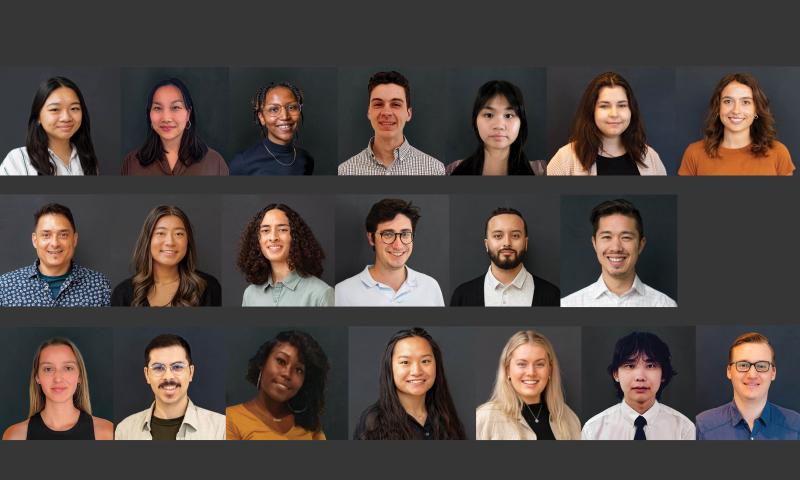
Joining the Seattle Design Festival this year are Trevor Gunderson and the MG2 Summer Interns with The Garden of Ideas! In this Pop-Up Experience, the team asks you to question the Now in order to generate new ideas that can be incorporated into our shared spaces and places.
In anticipation, the Seattle Design Festival sat with the interns to learn more about what inspires them.

We’re excited to be listed in ENR’s Top 225 International Design Firms of 2023.
Note: To view the complete list, a login is required.

We’re excited to be named one of The Top 45 Architecture Firms in the US 2023 by Green Building and Design.

Kathryn Hamilton recaps MG2’s “The Unexpected Challenging and Solutions of Multilevel Warehouse Design” panel discussion with Russ Hazzard (moderator), Maribel Barba, Michael Bennet, and Ken Sun at I.CON West in the Summer issue of Development Magazine.

We’re excited to be among the top retail design firms of 2023 ranked by VMSD. It’s an honor to be ranked 4th alongside many other exceptional firms and designers.

SMPS Seattle’s annual Reign Awards gala recognizes excellence in marketing communications and outstanding achievements of top marketing professionals.
MG2 won Best Event for “Costco’s 40th Anniversary Event & Exhibit”.

We’re honored to be included in the Puget Sound Business Journal’s annual list of Corporate Philanthropists.

“For a lot of the larger buildings one should consider a pre-engineered metal building (PEMB) with a single skin façade rather than a conventional steel building with concrete tilt-wall construction. With ever-increasing energy code requirements as well as the increased cost of electricity in general, pre-engineered metal buildings can help increase energy efficiency significantly while also reducing overall construction schedules.”
— Doug Brookbank, principal in the Washington, D.C. office, MG2, on industrial and warehouse buildings, especially those larger than 100,000 square feet

Ranked by 2022 metro-area architectural billings.

MG2’s Brian Bonar spoke with John Stearns for this 425 Business special feature about Costco Wholesale’s new headquarters addition in Issaquah, WA. We are proud to be working together with Costco on this project and to be a trusted partner for 40 years.

Companies from Washington and beyond supported the state’s charities throughout 2022 as the economy cooled, inflation rose and as the long tail of Covid-19 lingered in our lives. The Business Journal’s lists of corporate philanthropists rank 75 of those companies for their contributions. The Business Journal will reveal the rankings of the 2023 Corporate Philanthropists rankings at the Corporate Citizenship event May 18 at the Sheraton Grand Seattle.

The design team was led by Maribel Barba, a project architect and manager who has worked in the Seattle office for a decade and had previously worked on the design of several Costco locations in Washington. “When designing this project we were definitely thinking of it as first and foremost a park and not a commercial center or space.”

The Home Depot, the largest home improvement retailer in the United States, recognized the need for an innovative, efficient, and sustainable approach to their store rollouts nationwide after a decade of construction dormancy. The company sought a partnership with a firm that would not only elevate the customer experience in their stores but design and manage a rollout program tailored to save the brand money and time as it continued to grow.
It faced the challenge of overhauling and transforming its development program to build new stores quickly and efficiently while also easing the burden on its administration staff.
Together in its new strategic partnership with MG2, which provides the brand expertise in cost management, entitlements, and full-scale program design and delivery services, the companies aimed to reduce The Home Depot’s new build construction schedule by 30%, as well as achieve a number of other goals including determining the right construction methods, implementing sustainable solutions, and appealing to communities and jurisdictions alike.




To determine the most suitable construction method and location for The Home Depot’s new stores, MG2 conducted a series of data-driven site analyses comparing pre-engineered metal buildings (PEMBs) against concrete tilt-ups. These analyses, which took into account and outlined each option’s proven advantages and potential volatilities, revealed significant benefits in choosing Houston, TX, as its new location and supported the brand’s decision to invest in a PEMB for its warehouse.
With a data-driven road map established, designers at MG2 began by creating and validating an in-depth prototype. Through this process, the team confirmed the potential to transform and streamline The Home Depot’s development and build process. With MG2’s holistic approach, the home improvement leader has been able to remain virtually hands-off, overseeing the projects from a high-level perspective without handling the day-to-day tasks.
As the partnership continues to grow, MG2 continuously targets efficiencies to deliver a greater return on investment for The Home Depot. Beyond cost and speed-to-market optimizations, the resulting store designs offered customers a cleaner, friendlier, and lighter interior experience. Updated wayfinding and educational initiatives further empowered The Home Depot’s clientele in their home improvement endeavors.

MG2’s data-driven site analyses played a crucial role in The Home Depot’s decision to invest in a pre-engineered metal building (PEMB) for their new Houston, Texas location and will continue to play an important part in determining the locations and construction methodologies of future stores. Despite initial higher material costs, the accelerated construction schedule of the PEMB warehouse led to overall savings of 0.7% to 3.2% for the year. In addition to its sustainability benefits—which appeal particularly to urban jurisdictions—the PEMB offers numerous advantages, including:
Leveraging combined expertise, MG2 and The Home Depot have effectively developed innovative, efficient, and cost-conscious solutions that align with the brand’s rollout objectives. The PEMB warehouse in Houston, Texas, showcases the partnership’s achievements and underscores the importance of data-driven program design in the evolution of retail spaces.
As the collaboration continues, both companies aim to further transform the home improvement retail landscape, providing enhanced value and experiences to customers across the nation.

Imagine playing soccer or shooting hoops on the outskirts of Mexico City while atop a 524,549-square-foot Costco Wholesale project. Built on a landfill, this unique retail warehouse, parking structure and loading bay is almost completely hidden from public view.

We’re excited to be included in ENR’s 2023 Top 500 Design Firms Preview.

Russell Hazzard, AIA, president of MG2, led a panel of experienced vertical industrial developers and architects at this week’s I.CON West in Long Beach, California, that explored the advantages and challenges that accompany these types of projects.

The look. The feel. The presence. Nothing stands out more in a commercial project than the
retail, restaurant, hospitality, healthcare (and other) sectors, check out our annual listing.
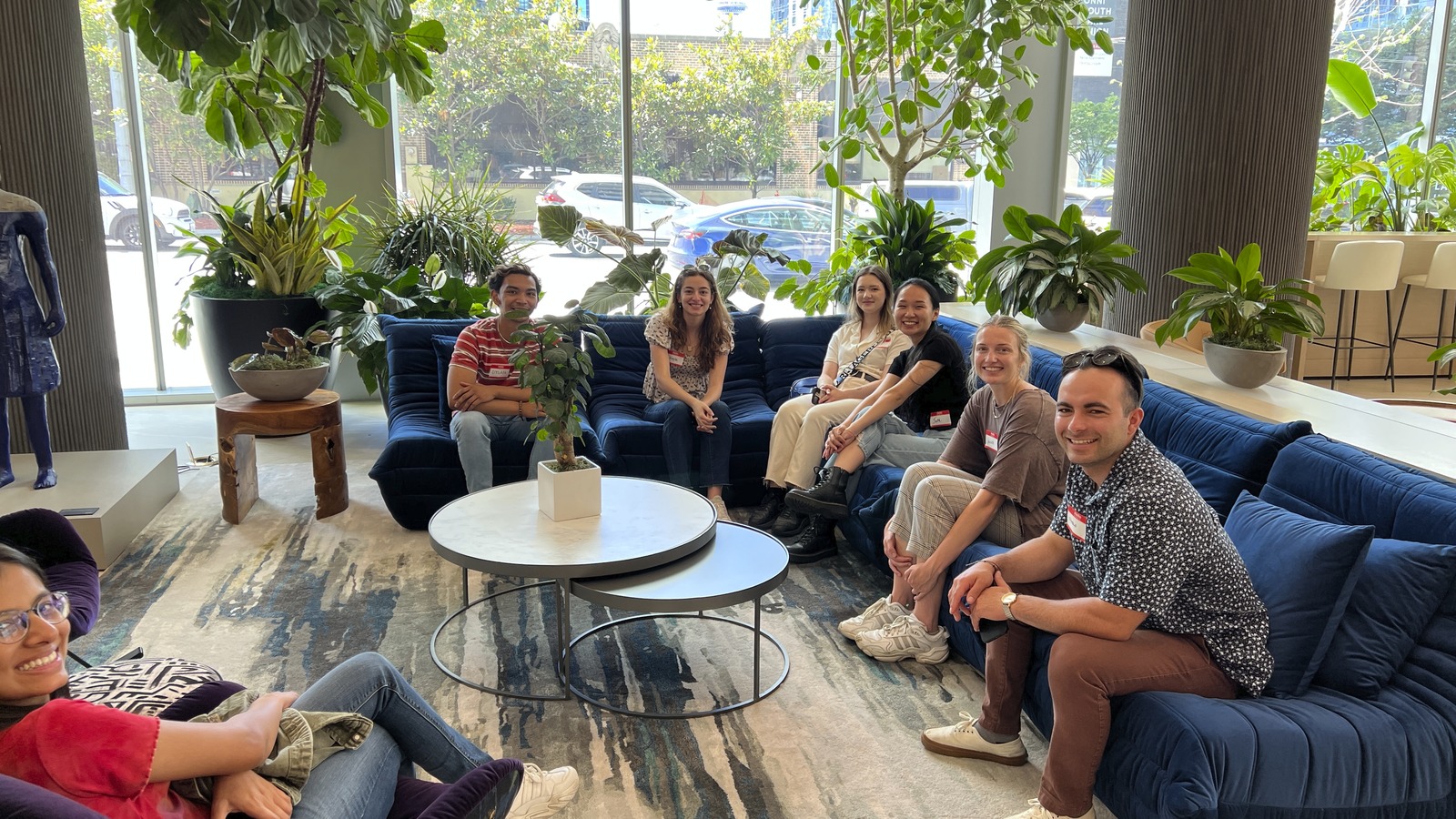
For decades, we’ve been passionate about supporting the development of future design leaders and fostering creative ideas that will influence the communities and spaces in which we live, play, and work. With unique perspectives and imaginative concepts, students have the potential to shape the future of the built environment and bring a breath of fresh air to the industry. That’s why we’re thrilled to announce that our Summer 2024 Internship Program is now open for applications.




MG2 has always placed distinctive value on high-impact career growth, continuous learning, and the influence those have on cultivating an exceptional company culture. Our Internship Program provides students with a hands-on experience in the field, allowing them to develop their skills and gain a comprehensive understanding of what it’s like to work in architecture and design. With four start dates to choose from, interns will have the flexibility to choose a program that works best for them and their university schedule.
Ready for real, hands-on experience? Not only will our students assist with document preparation, data collection, research, and other project tasks that ensure successful results, but they’ll also have access to dynamic social and learning events, mentorship, as well as our infamous Annual Student Intern Design Competition. Designed to give interns a comprehensive understanding of the industry, we’re excited to provide applicants with the opportunity to be a part of our dynamic and collaborative team and contribute to shaping the future of design.

We’re looking for passionate learners who are currently pursuing a Bachelor’s or Master of Architecture or a related degree and have proficiency in AutoCAD, Revit, MS Office, and Adobe Creative Suite. Applicants should also embrace and exude MG2’s core practice values of an Integrated Approach, Design Excellence, Social Responsibility, Leadership, and Results.




This year MG2 is offering internship opportunities in each of our United States offices, with focuses that span our 社区环境, 消费者体验, and 客户项目 markets. With a variety of opportunities available, students will be able to experience projects, sessions, workshops, and experiential collaboration that aligns with future career goals.
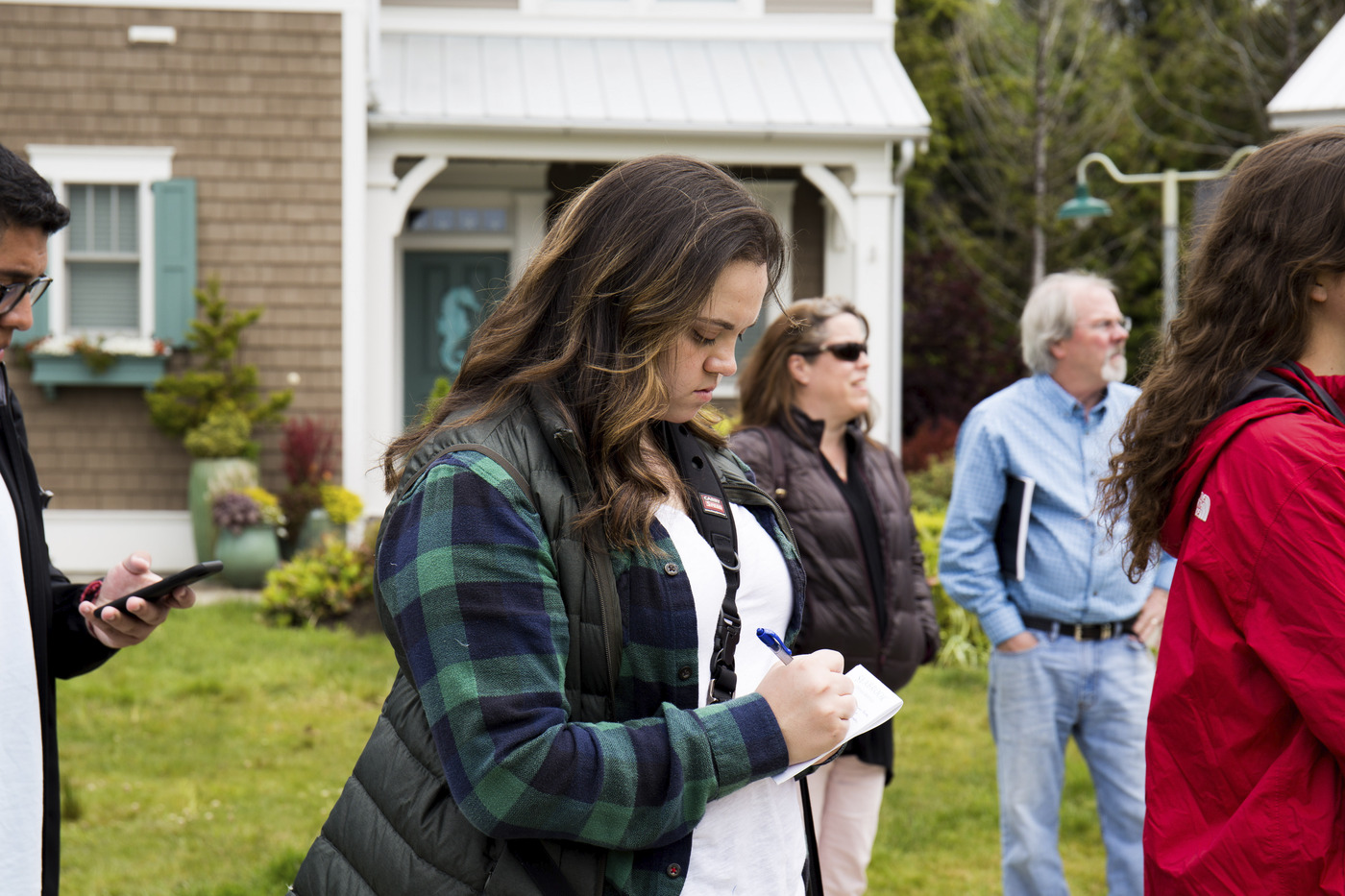
Our employees are the heart of our firm, and as part of our team for the summer, students will have access to a variety of programs and perks that aim to make their experience with us truly unforgettable. From our commitment to sustainability to our dedication to equity, diversity, and inclusion, our interns will find a supportive and inclusive community at MG2.
To keep our culture strong and bring everyone together, we host bi-weekly all-office meals, monthly recognition events, happy hours, summer activities, and an end-of-year holiday party to commemorate our successes. No accomplishment is too small to celebrate, and we’re passionate about making every moment count.

To ensure our built environments are a true reflection of the communities we serve, diversity is a fundamental ingredient in MG2’s recipe for creating not only exceptional projects but an inclusive and equitable work environment. We’re actively seeking out talented individuals from diverse backgrounds who bring a wealth of unique perspectives and ideas to the table.
Our differences make us stronger and are integral in designing and building experiences and spaces that cater to everyone. We proudly champion inclusion in all its forms and strive to elevate every voice in order to create truly equitable experiences and spaces.
In our never-ending quest to cultivate the next generation of design professionals, we’re excited to welcome students who share our values, vision, and passion to join our team this summer. Early applications are due April 5, 2024. Let’s start your journey in architecture together.

With over 20 years of experience in the design and construction industry, Roy leads teams at MG2 with unique expertise in building and maintaining prototypes and roll-out toolkits. These specializations can include everything from a baseline kit of parts approach, comprehensive construction documentation template sets, and design, to sustainability or development guidelines.
Over his decorated career, Roy has excelled in the design and delivery of a range of project types, from ultra-custom, high-end flagship programs to fleet rollouts in multiple countries. Utilizing a methodological approach, he and his team take the time to listen and deeply understand each client’s goals and requirements, presenting those objectives back graphically in a straightforward manner to ensure clarity. From there, scalable solution options are born, tailored to both the size and ambition of the rollout program and the client itself.
Roy constantly analyzes an ever-shifting market, staying abreast of current challenges, including ever-increasing costs, supply chain challenges, and increasingly ambitious sustainability requirements, all of which are central in determining 什么 gets built, in addition to designing systems for 怎么样 it gets built.
He hand-selects specialists to solve each client’s most relevant design challenges through quantifiable analysis, creating program-based tools and solutions that are accurate, efficient, and flexible over time. Through Roy’s unique approach and process, he creates spaces that embody each partner’s objectives, goals, and core values.
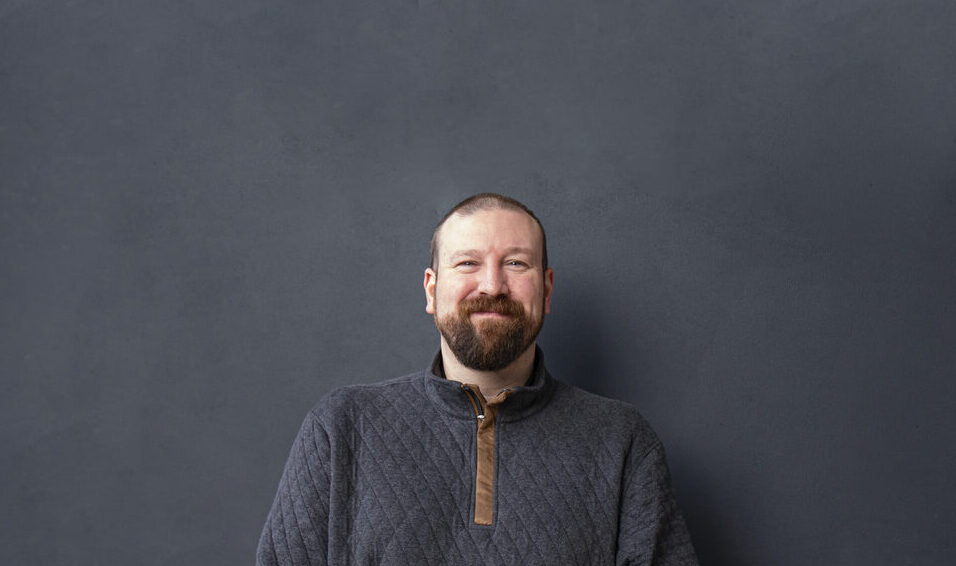
With a master’s in Architecture, foundations in project management, and almost two decades of experience under his belt, Geir Mjelde brings a wealth of expertise to the program management field. As an Associate Principal for Client Programs and regional lead for our partnership with Costco Wholesale, he has a deep understanding of how architecture brings people together to create human-centered built environments.
As he partners closely with clients to ensure successful outcomes, Geir’s passion for delivering a better product is evident in his process, which leverages strengths in organization and communication. His hallmark approach to design is characterized by leadership, respect, and hard work, and his dedication to the success of the teams with which he works inspires him daily.
When he’s not strategizing about the future of the built environment or working toward delivering exceptional results, you’ll find Geir spending time surrounded by nature and indulging in his favorite pastime of disc golf.
As with the two before it, 2022 was a year of unpredictable change, evolution, and growth for our company, industry, and planet. MG2 is thrilled to take this moment in time to celebrate the devotion, perseverance, and enthusiasm that saw us through it all with the promotion of 102 highly outstanding staff across our global offices throughout the year.
As we dive into the waters of 2023—an adventure into both boundless prospects and undiscovered possibilities—we’re humbled and honored to have such incredible talent leading the way.
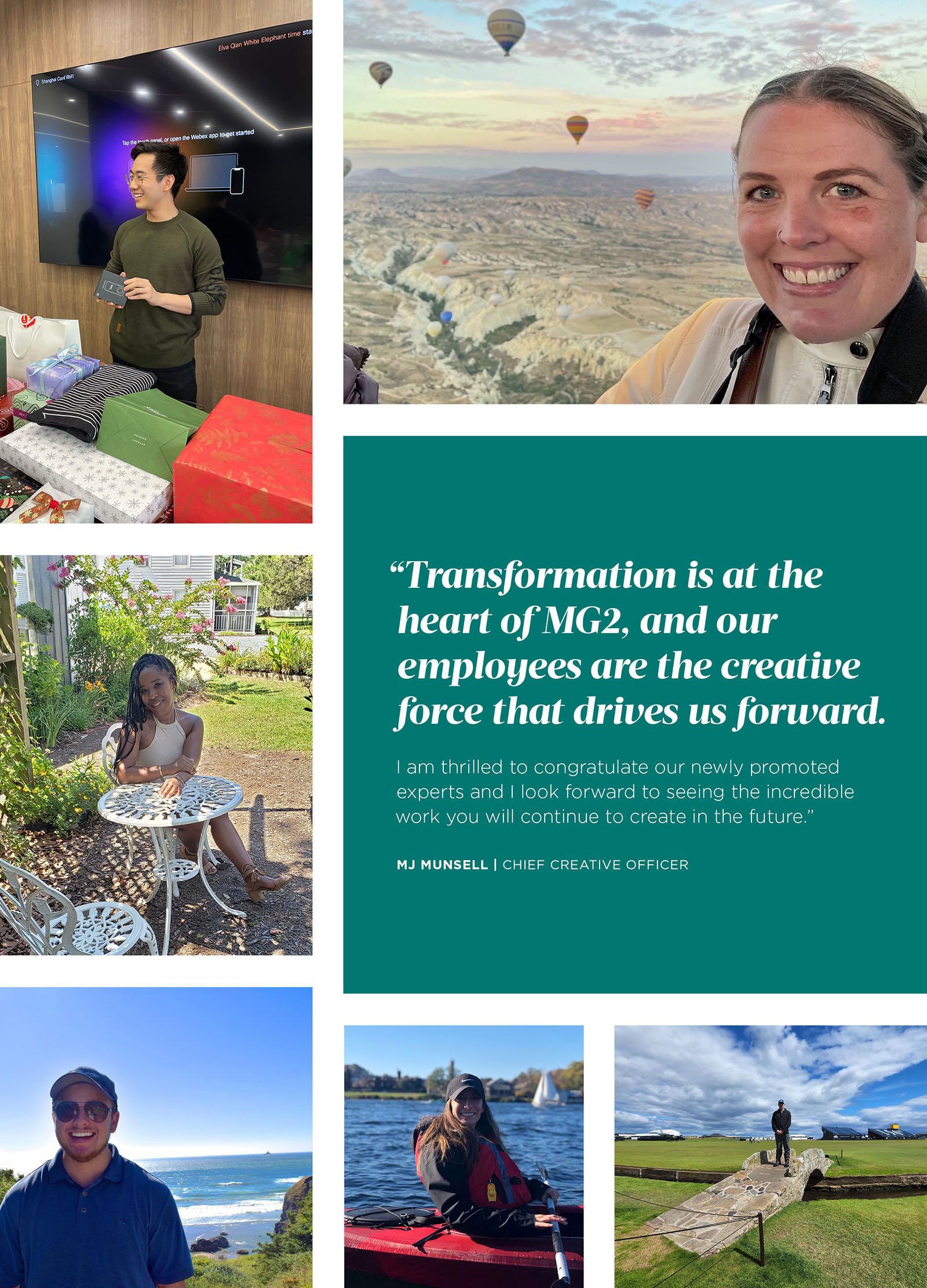
Amongst our leadership, it’s a pleasure to introduce our new Chief Financial Officer—Wendy Unzelman—and welcome three new Principals—Amy Hart, Mitch Pride, and Roy Hague—as well as three new Associate Principals—Nathan Menard, Geir Mjelde, and Javier Buscaglia-Pesquera—to our ranks.
But of course, our leaders are just one patch on the diverse quilt that is MG2. It’s with absolute pleasure that we celebrate the career advancement of dozens of dedicated staff from every department, market, and level. There are no small responsibilities here; we would not be the company we are today without the extraordinary ability and tenacity of all of our colleagues. We are fortunate to have outstanding people defining and delivering a limitless future for MG2 and our customers, putting your best into all you do, and making our firm such a fantastic place to work. Congratulations to all!


